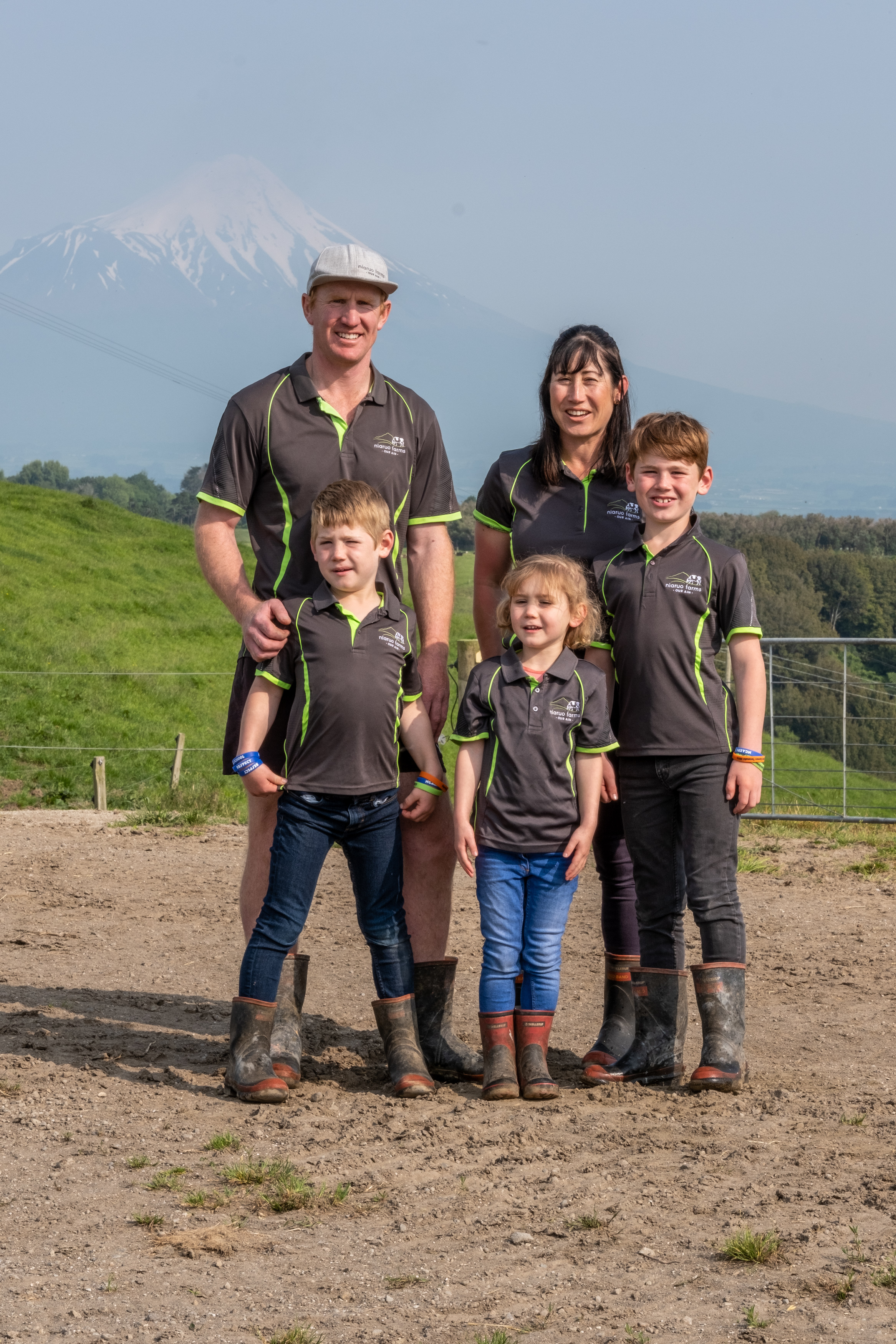Hayden and Alecia milk 400 cows on a 177-hectare farm in Hawera. Four years ago, they dipped their toes in the DNA-testing waters with CRV. Their reasons for DNA testing were simple: their breeding decisions rely heavily on parentage accuracy, and they know the average industry mis-mothering error rate is high. Hayden explains.
“We work hard to match calves with their mothers, but it’s impossible to get it right all the time. Some farmers swear they never get a cow and calf mixed up, but it absolutely happens.
“I’m breeding for specific traits into my cows, and to do that, I need to use the right genetics with the right cows. My decisions are entirely based on the parentage of the dam and the sire. If that’s inaccurate, then so are my breeding decisions.”
CRV myDNA product manager Anna Morrow says mismothering is an issue in the New Zealand dairy industry.
“Farmers put the calf to the wrong dam, and subsequently the wrong sire, 25% of the time. When that happens, the breeding values against those animals are inaccurate. Parentage mistakes then get fed into the national database, which doesn’t help farmers make good breeding decisions.
“But it’s an easy fix. A tissue punch from an animal’s ear is all we need to analyse the DNA and run it against the whole database of sires. Once we do that, we can verify the correct sire and dam for an animal with very high accuracy.”
Genomic testing a game-changer
After DNA testing their entire herd, Hayden and Alecia eliminated all doubt as to the parentage of their animals. Having seen good results, they opted to finetune their breeding programme to allow them to target specific traits they needed to boost the performance of their animals.
The next step was genomic testing.
Using the same ear tissue, genomic testing is a more accurate method of predicting the performance of an animal. As a DNA product manager, Anna understands how genomic provides clearer insights.
“A genomic test is a deeper dive into the DNA. With this test we can see the genetic markers that are responsible for specific traits within an animal. It adds an extra layer of accuracy to predicting the performance of an animal.
“A cow’s performance is directly related to the genes inherited from its mum and dad. Parent average breeding values are calculated using 50% of each parent’s genetic value. However, the portion of each trait coming from mum and dad differs. By looking at the DNA we may find that 80% of an animal’s genes that express a trait have come from her mother and only 20% from dad. This will affect the breeding value for this trait and can move it up or down. This more reliable genomic information can dramatically change the breeding decisions a farmer makes."
A wish list of traits
While breeding isn’t as simple as ticking a list of MUST-HAVE boxes, genomic testing has enabled Hayden to target desirable traits.
“Our farm is a business, so we ask, ‘What animal traits does our business need?’ I've got five or six key parameters that I'm looking for in the cows I want to milk and breed from.
“The first one is good udder structure. We put a lot of emphasis on that because milking is the only time you’re extracting dollars out of that cow.
“Second is capacity. A cow needs to be able to convert feed into milk, and to do that, she needs a lot of internal room.
“Rump angle and width are important to make calving easier. Then there are the production factors. Our herd is predominantly Friesian, so we’ve got plenty of milk, but we're now focusing on lifting fat and protein percentages.”
A wise business investment
As dairy farmers grapple with rising costs, many might see DNA and genomic testing as luxuries they can’t afford. Hayden and Alecia take a different view. For them, testing is an investment that pays for itself in the short term and can significantly boost profits over time.
The short-term payback is seen in the selection of Hayden’s replacement animals.
“We always have surplus heifer cows in our system, and we can’t keep them all. It costs about $1800 to raise a heifer into the herd, so I only want to spend that money on animals that have the traits my business needs. How do I know which ones to keep and which ones to sell? Genomic testing.
“Testing also saves us money on animal health. When a cow gets mastitis, it might cost me $180 to get her right. I’d rather spend a little extra to breed cows that have low somatic cell counts. If she also has a good udder and structural setup, the cost of DNA testing up front becomes a nominal cost.
“DNA testing looks complicated, until you get your toes wet. Then you find it’s not hard to do.
The CRV team is fantastic. They work with you and break everything down so you can understand. If there’s anything I want to know, I pester them with questions!
“Bottom line for me: I’d be breeding in the dark without this data.”

